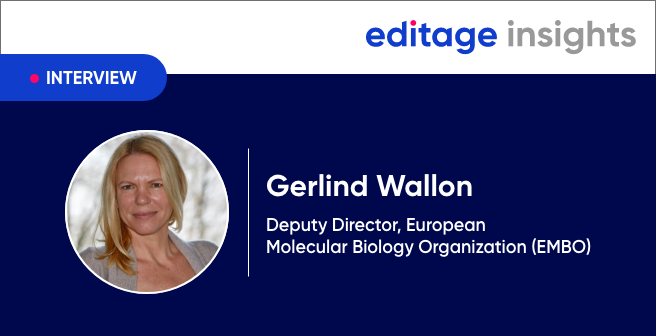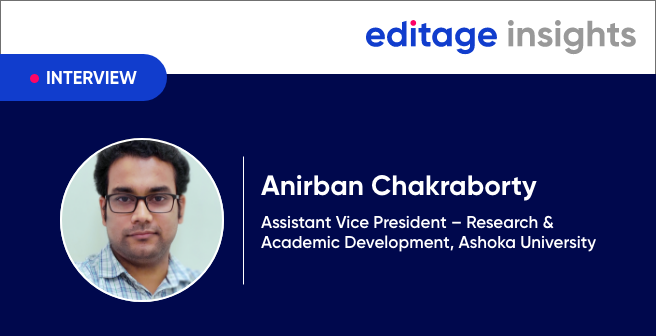Impact factors are not a direct measure of a journal’s success

Ian is Publisher at The Institution of Engineering and Technology (IET), a leading international professional and learned society serving the needs of the engineering and technology community. Ian handles the IET’s portfolio of research and rapid communication journals and academic books, which includes 27 hybrid research journals, one wholly open access journal, a programme of professional reference titles and monographs, and conference proceedings. He also manages the content acquisition strategy for Inspec, an engineering abstract and indexing database. Over the years, Ian has built a strong understanding of business operations and management in academic publishing. He has worked in various publishing roles for over 20 years – most recently as publisher for Faculty of 1000 and for CMG/Springer Healthcare. He has also held roles in sales for Martin Dunitz and Taylor & Francis. Ian holds a Bachelor’s of Science degree in Publishing and Microelectronics from Oxford Brookes University.
In the previous segment of this two-part interview series, Ian told us more about the IET’s history, its vision, mission, resources, and services. In this segment, we discuss broader aspects of publishing with Ian, such as the open access publication model, hybrid journals, and journal workflow management. Ian also shares his views on the role and evolution of open access in today’s publishing landscape as well as the challenges faced by ESL authors trying to get published in international English-language journals. As far as publishing trends go, Ian feels that data mining and text mining are here to stay. And given the dynamic nature of academic publishing, newer systems of peer review will emerge and the traditional specialist journals may soon be replaced with systems that share a version of published papers.
Does the IET publish open access or hybrid journals?
The IET started publishing open access journals in April 2013. As part of our commitment to supporting our authors and researchers and, as a response to their needs and those of their funders, we created open access offerings that would fit comfortably with our established portfolio of journals, conferences, videos, and books. All of our journals are hybrid journals, with the exception of The Journal of Engineering, which is our only fully gold open access megajournal publishing scientifically sound engineering research across a range of topic areas and serves the publication needs of interdisciplinary research and emerging fields.
Our approach to open access is guided by the needs of the researchers and the research consumers, which means that we support our authors in ways that best suit them. We support the mandatory and voluntary deposition of authors’ work in institutional and subject repositories. Our Green open access policy is most generous, with most of our journals allowing authors to immediately self-archive a version of the final typeset paper in an institutional repository. Currently the only exception to this is Healthcare Technology Letters where we have a 12-month embargo on non-Gold open access articles, chiefly as a response to our inclusion in PubMed Central.
Extending the previous question, in your opinion, what role does open access play in the publication landscape today? How do you see it evolving?
Open access is fairly well established today and most researchers are aware of what it is and how it will benefit them. But there is still a lot to do to get the multi-disciplinary engineering community to fully engage with what’s available. Researchers want to conduct research and then publish that work. The business model is less of a consequence and something that publishers and funding bodies are primarily responsible for. However, the dissemination of work does matter to researchers and open access can assist that. The model is not perfect and we’re seeing variations of it amongst other publishers and, undoubtedly, there will be further refinement and new versions of it will become available in the future.
The IET manages multiple journals: how do you measure their success? Do you rely on the impact factor alone? If not, what, according to you, is the best way to measure journal quality?
We measure the success of our journals based on the quality of the research content and the influence of our journal editorial boards. Impact factors are a useful tool and, of course, a good indicator of how our journals measure up, but they are not a direct measure of a journal’s success. Our goal is to increase the usage of our journals, not just the citations, by producing high-quality content that supports technological innovation. This relates directly back to the IET mission to “inspire, inform and influence”. High-quality research can only make our journals more useful for the global engineering and scientific community.
Additionally, we measure Google Scholar citations along with a number of other alternative metrics such as the Immediacy Index – this measures how quickly the articles are cited in the year of their publication. Other metrics that are a more accurate measure of the influence and scientific importance of an article are Eigenfactor, as well as metrics based on the Scopus citations – SCImago Journal Rank (SJR).
Journals and publishers are increasingly focusing on internationalization so as to reach out to a wider author base. Do the IET journals attract research from all over the world?
Yes, we do attract research from all over the world – we have for many years. We welcome research from all countries as long as it meets the publication standards of our journals. However, we are now seeing an increase in the number of submissions from authors in China and India, where the research base is on a par with the more traditionally strong regions such as the USA. It’s not just submissions that are coming from many different countries. We also see usage from around the world reflecting the international reach and dissemination of our journals.
Given the dynamic nature of publishing and intense competition to publish, what, in your opinion, are some of the challenges faced by ESL (English-as-a-second-language) authors today? How does the IET help ESL authors?
It’s true that language can sometimes be a barrier to the peer review process if English is not the author’s first language. The IET understands that, but it is important that authors can write clearly, and we encourage our peer reviewers to give full and proper feedback wherever possible. And this is one of the reasons why we are pleased about our partnerships, through which we try to help ESL authors ensure that good research content is presented in the best light and therefore has the best chance of being disseminated to the academic community.
The publishing landscape is abuzz with alternative trends (post-publication peer review, open peer review, collaborative publishing platforms, mega-journals, etc.) that challenge the conventional journal publication workflow. Which of these is here to stay?
“Text-mining” and “data-mining” are certainly terms on everyone’s lips at the moment and it’s true to say, as technologies develop and the ability to analyze huge datasets evolve, we will see new products and services emerge that will either help us analyze data or will use the outputs of this analysis as products/services themselves. Although it’s been talked about for some time, I do think, again facilitated by new technologies, that we will see new systems for peer-review emerge, and new mediums for the dissemination of research that increasingly will be seen as legitimate. These systems may, in time, replace the traditional specialist journal as the way to publish a version of record. Linking up and making institutional and subject repositories more discoverable will also change the way we publish and will have obvious implications for the sustainability of journal publishing. We also see the range of business models available to customers, and who we regard as the customer, to be changing quickly. This, alongside the range of media now available for publication and for use in research, means that new business formats, and better access platforms will be needed. So the future certainly looks exciting for all involved.
Thanks, Ian!
Full disclosure: Editage has collaborated with the IET to provide discounted English-language editing services to authors submitting to the IET portfolio of journals. However, this interview has been conducted independently by Editage Insights and poses no commercial conflict of interest.



